Existing User Log In
New User Registration
Register for a free account to gain full access to the VGChartz Network and join our thriving community.



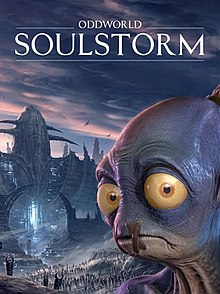

America - Front
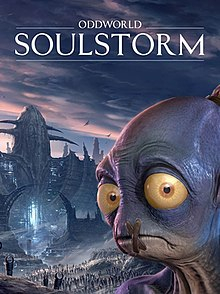

America - Back

The Oddworld games, specifically the side-scrolling cinematic platform games, are not for everyone. They cover dark subject matter, are incredibly challenging, and involve a lot of trial and error. But, for fans of the series, there's just something special about the pageantry of the planet Oddworld and something very engaging about its tense puzzle-solving gameplay and replayability. Oddworld: Soulstorm, the latest game in the franchise, is no different. It's a punishing game with lots of stops and starts, but its production design, world-building, platform-puzzle mechanics, and replay value make it worth playing.
Before we dive into the story, a few housekeeping notes are in order. The first game in the Oddworld canon was 1997's Oddworld: Abe's Oddysee, which was followed one year later by Abe's Exoddus. Abe's Oddysee was remade in 2014 as Oddworld: New 'n' Tasty!. This latest title, Soulstorm, is a direct sequel to New 'n' Tasty! and a reimagining of Abe's Exoddus. Make sense?
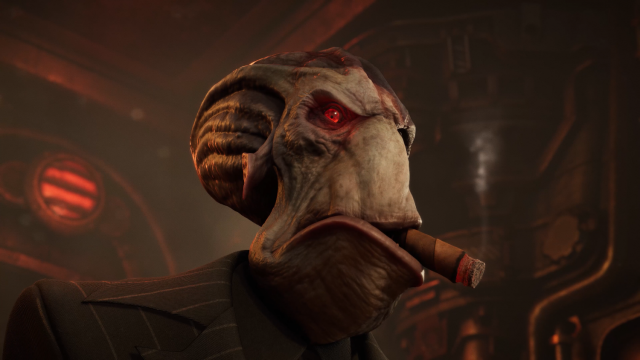
Soulstorm picks up shortly after the events of Abe's Oddysee/New 'n' Tasty. The unlikely hero Abe has already rescued his fellow enslaved Mudokons from RuptureFarms and they're all hiding out in a cave in the desert. However, their peace and freedom is short-lived. Enemy forces, led by RuptureFarms CEO Molluck the Glukkon, discover the Mudokon hideout and burn the place down. Soon, Abe finds himself on a mission to reunite with the scattered survivors and perhaps strike a much larger blow against the Glukkon cartel.
As the second part of a pentalogy (or "quintology" as the producers put it), Soulstorm feels a bit episodic, but not in a bad way. It tells an interesting, harrowing story and stars a sympathetic, complicated hero in Abe. It can linger a bit too long on inter-Glukkon politics, but in general it hits the right notes, keeps you invested throughout, and leaves you wanting more — particularly if you get the "good" ending.
Soulstorm is a side-scrolling stealth action-platformer-puzzler with cinematic flair. You'll control Abe on foot as he explores deadly levels, engages with enemy patrols, opens locked doors and blocked pathways, and attempts to rescue his fellow Mudokons. The game is designed around a series of dangerous, risky scenarios that demand a lot of trial and error; you will undoubtedly attempt the same sections again and again, especially if you're going for a good "Quarma" or pacifist run.
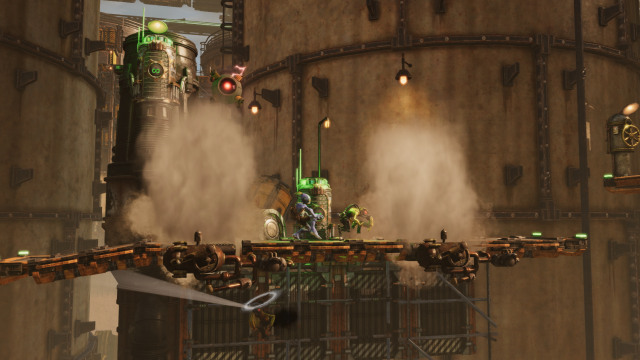
While Soulstorm definitely funnels its players in a certain direction, there's a good amount of player agency at play. When Abe stumbles upon an enemy patrol or outpost, he can opt to sneak or crawl by, or use his chanting ability to possess one of the baddies. He can then use that bad guy to pull switches or fire at his comrades, or even jump to his death. Alternatively, Abe could use the game's crafting system to build a rubber band ball or Molotov cocktail to dispatch the nearest sentry and run past in the confusion. In the same way, upon finding a group of sick or abused Mudokons, he can attempt a dangerous rescue mission or leave them and march toward the exit. You can really be as violent or benevolent as you want.
That said, only by rescuing a certain number of Mudokons can you hope to see two secret levels and the final cinematic — so there is technically a right and wrong way to do things. Still, the freedom to experiment is nice.
Experimentation really is the name of the game, because unless you have Jedi reflexes you won't make it through each level unscathed. As Soulstorm becomes deadlier and more complex, with smarter enemies and anti-chanting wards, you'll need to try a lot of strategies to make it through, especially if you're leading a long trail of vulnerable Mudokons behind you. While the partner AI is great — Mudokons will mimic your behavior, tiptoeing when you tiptoe and hiding in a locker when you hide — it can't overcome saw blades, crushers, bottomless pits, electrified walls, and bullets without your guidance. You'll inevitably lose a few friends, waste your supply of Fizzy Pop, kill too many enemy Sligs, or die yourself, and then need to start over. There are plenty of checkpoints in the game, which is great, but that doesn't stop Soulstorm from being, at times, a stressful and frustrating game.

One thing about Soulstorm that's unimpeachable, though, is its replay value. There are 17 levels in total — 15 standard and 2 secret — all of which track your best time, secrets found, total badges, and "Quarma". You can replay every one to boost your stats; earn additional badges by scavenging, destroying objects, and apprehending Sligs; and raise your Quarma by rescuing more Mudokons. Earn positive Quarma in at least 12 levels and you're on your way to the "good" ending. Moreover, best times and badge scores are uploaded to online leaderboards, so you can replay for bragging rights. Finally, there are several difficulty settings.
As for the length of the main game, well, the publisher advertises 15 hours for your first playthrough, with dozens of hours for perfectionists and achievement hunters. I logged about 34 hours through all 17 levels, including a lot of stops and starts.
Part of what kept me coming back for more was the game's visual design. While the graphics themselves are great, what truly makes Soulstorm stand out is its striking art direction. The world feels real and functioning, like it has a long history. The train, which appears in the game's promotional materials, is a work of art in itself. It's no surprise it gets a level to itself, "The Hijack", and features very prominently throughout the game. Now, it's not all perfect. In some places the recycled rocky or industrial environments get old, but there's always an impossibly tall tower or bizarre airship to elevate the fantasy.
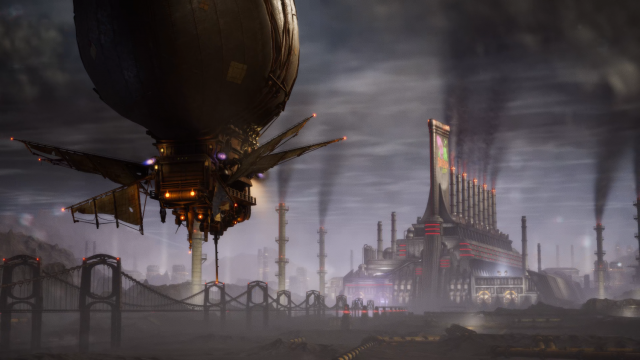
Adding to the aesthetic allure of the game is its 2.9D framework. Soulstorm is essentially what's known in the industry as 2.5D — two-dimensional gameplay amid 3D environments — but it definitely edges very close to 3D. Throughout the game there's a feeling that you are going into the world, instead of simply moving left and right along a single axis. It's a very enjoyable visual effect.
Despite its visual victories, Soulstorm suffers from a collection of bugs. Pre- and post-launch patches have erased the major ones, but there are a handful of tiny annoyances that will invariably present themselves. These include Sligs and Mudokons spawning in the wrong places after resetting from the last checkpoint, NPCs resting on invisible platforms, and one very specific glitch I encountered in Necrum where a saw blade didn't move as scripted and I couldn't advance without restarting the previous checkpoint.
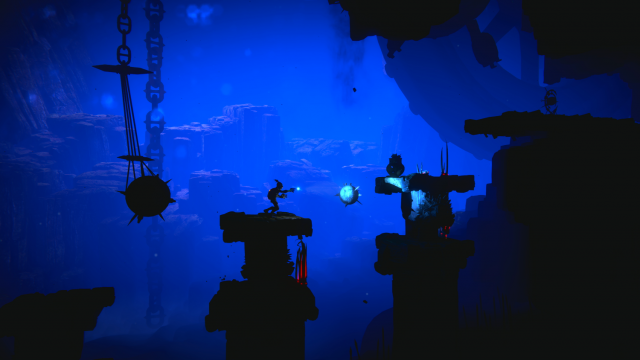
There are two bugs that I did not experience, but which deserve mention due to a request from the publisher. The first involves a late-stage game freeze bug in Necrum that was wiping out game save data. The development team was able to identify the bug and eliminate the save data glitch, but the bug remains. So, you may still be kicked out of the game, but your save data will be unaffected. This bug is unique to the PS4 and PS4 Pro versions of the game. The second bug, which affects all versions of the game, involves an infinite falling loop. If this happens, the publisher recommends restarting the last checkpoint. You can find full patch notes here.
Aside from bugs, the game performs well, apart from some noticeable slowdown in level 15, The Yards. In general, the PS4 version runs at 1080p and 30 frames per second, while the PC and PS5 versions support 1440p and 60 FPS.
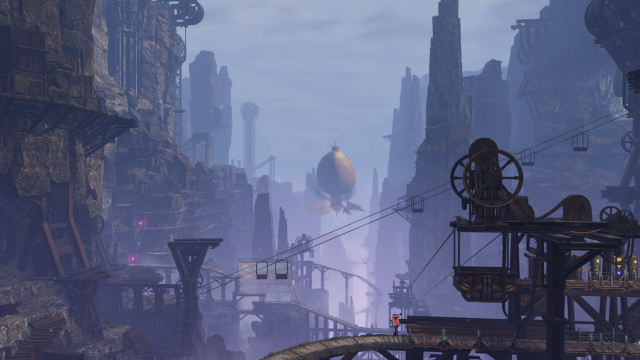
Soulstorm is an Oddworld game, with all the oddities that name implies. It's demanding, unforgiving in spots, and sometimes very frustrating. Yet it also boasts an intriguing narrative, stellar art direction, flexible platforming-puzzling gameplay, and lots of replay value. Ultimately, whether you like, love, or hate the game comes down to your tolerance for restarting and retrying. If you're fan of the PS1 Oddworld titles, or trial-and-error stealth games in general, then this is an easy recommendation. If you just can't stomach the thought of spending 30 minutes or more trying to pass a single section, you may be the odd one out.









